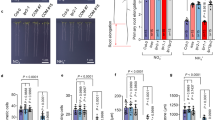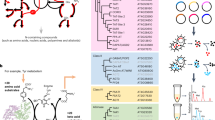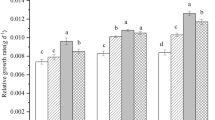Abstract
AMINO-ACIDS can be synthesized in roots1,2, leaves2 and shoots3 of plants. However, it has not been clearly demonstrated whether the amino-acids used during the growth of young leaves are synthesized in situ or in some other part of the plant. The route taken by nitrogenous material transported into young leaves has also to be demonstrated.
This is a preview of subscription content, access via your institution
Access options
Subscribe to this journal
Receive 51 print issues and online access
$199.00 per year
only $3.90 per issue
Buy this article
- Purchase on SpringerLink
- Instant access to full article PDF
Prices may be subject to local taxes which are calculated during checkout
Similar content being viewed by others
References
Cocking, E. C., and Yemm, E. W., New Phytol., 60, 103 (1961).
Rogers, B. J., Plant Physiol., 30, 377 (1955).
Leonard, O. A., Plant Physiol., 11, 25 (1936).
Bollard, E. G., Nature, 178, 1189 (1956).
Van Die, J., Proc. Kon. Ned. Akad. Wetensch., Ser. C, 64, 375 (1961).
Author information
Authors and Affiliations
Rights and permissions
About this article
Cite this article
JOY, K. Transport of Organic Nitrogen through the Phloem in Sugar Beet. Nature 195, 618–619 (1962). https://doi.org/10.1038/195618a0
Issue date:
DOI: https://doi.org/10.1038/195618a0
This article is cited by
-
Translocation of Amino-acids in Sugar Beet
Nature (1966)



